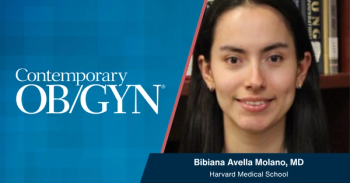
Risk-reducing bilateral salpingo-oophorectomy adherence differs by provider
In a recent study, increased rates of risk-reducing bilateral salpingo-oophorectomy guideline adherence was observed in gynecologic oncologists compared to general gynecologists.
According to a recent study published in the American Journal of Obstetrics & Gynecology, gynecologic oncologists have a greater adherence to risk-reducing bilateral salpingo-oophorectomy (rrBSO) guidelines compared to general gynecologists.
Hereditary breast and ovarian cancer syndromeincrease the risks of breast and ovarian cancer, with breast cancer gene (BRCA) mutations increasing the risk of high-grade serous carcinoma (HGSC) of the ovary, fallopian tube, or peritoneum.
Early-stage disease can be detected using longitudinal screening with serum cancer antigen 125 (CA-125) and transvaginal ultrasound, but this method has not been associated with mortality benefits in patients with HGSC. However, reduced mortality from HGSC has been associated with rrBSO.
The risk of ovarian cancer is reduced by over 80% in women with BRCA mutations from rrBSO, highlighting the value of this procedure. To determine how adherence to rrBSO guidelines differs between gynecologic oncologists and general gynecologists, investigators conducted a retrospective analysis of rrBSO cases.
Cases were evaluated by faculty and voluntary physicians between October 1, 2015, and December 31, 2020. Patients were aged 18 years and older, received a bilateral salpingo-oophorectomy, and had a genetic susceptibility to malignant neoplasm of the breast, malignant neoplasm of the ovary, or encounter for prophylactic removal of ovary or fallopian tube.
Exclusion criteria included having a known or suspected gynecologic pathology as the indication for surgery, a history of hysterectomy or of rrBSO and total hysterectomy, and not having complete ovarian reports. The demographic and clinical data of participants was gathered, with information on CA-125 or preoperative pelvic imaging obtained from preoperative records.
The first primary goal of the study was to identify variations in compliance with all surgical steps of rrBSO between provider groups, measured as a binary of yes or no. The second primary goal was adherene to the Sectioning and Extensively Examining the FIMbriated End (SEE-FIM) protocol and was also measured as a binary.
There were 195 women included in the analysis, 96 of which received an rrBSO from a gynecologic oncologist and 89 from a general gynecologist. Completion of all 5 steps of rrBSO was seen from 71.88% of gynecologic oncologists compared to 4.49% of general gynecologists.
Surgical compliance did not differ based on race, ethnicity, body mass index, or preoperative conditions. The final model indicated gynecologic oncologists were 54.3 times more likely than general gynecologists to record adherence to all 5 steps of the procedure.
SEE-FIM protocol was performed by 43% of gynecologic oncologists and 26% of general gynecologists. Pathology requisition indication was the only external factor associated with SEE-FIM adherence. When adjusting for pathology requisition, SEE-FIM adherence did not differ between provider groups.
Preoperative CA-125 was found in 45.8% of cases performed by gynecologic oncologists and 5.6% of cases performed by general gynecologists. Gynecologic oncologists also more often obtained preoperative imaging compared to general gynecologists, at 71.9% and 11.2% respectively.
These results indicated increased rrBSO adherence from gynecologic oncologists compared to general gynecologists. Investigators recommended institutions standardize rrBSO surgical technique and pathologic specimen preparation.
Reference
Blustein P, Werner SR, Uppalapati P, et al.Adherence to risk-reducing salpingo-oophorectomy guidelines among gynecologic oncologists compared to general gynecologists. Am J Obstet Gynecol. 2023;229(280):280.E1-280.E8 doi:10.1016/j.ajog.2023.06.011
Newsletter
Get the latest clinical updates, case studies, and expert commentary in obstetric and gynecologic care. Sign up now to stay informed.




















